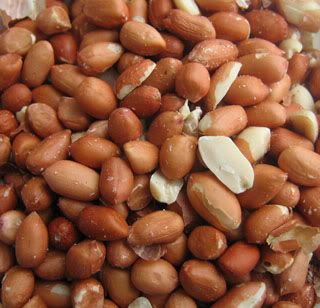Grape skin, pulp, and seeds contain resveratrol, a naturally occurring plant chemical that seems to reduce the risk of heart disease and some kinds of cancer. The darker the grapes, the higher the concentration of resveratrol. Dark purple grape juice, for example, has more resveratrol than red grape juice, which has more resveratrol than white grape juice. Because wine is made from grapes, it, too, contains resveratrol (red wine has more resveratrol than white wine).
But you don’t need to drink grape juice or wine to get resveratrol. You can simply snack on peanuts. Yes, peanuts. A 1998 analysis from the USDA Agricultural Research Service in Raleigh, North Carolina, showed that peanuts have 1.7 to 3.7 micrograms of resveratrol per gram of nuts. Compare that to the 0.7 micrograms of resveratrol in a glass of red grape juice or 0.6 to 8.0 micrograms of resveratrol per gram of red wine. This fact may explain data from the longrunning Harvard University/Brigham and Women’s Hospital Nurses’ Health Study, which shows that women who eat an ounce of nuts a day have a lower risk of heart disease. So let’s see — wine, grape juice, peanuts . . . decisions, decisions.







